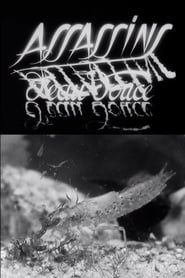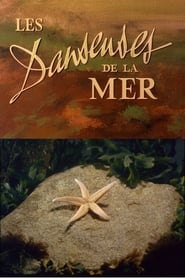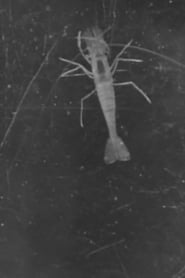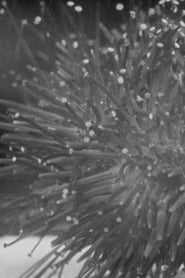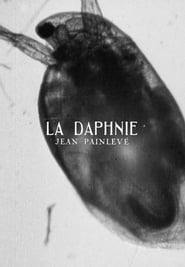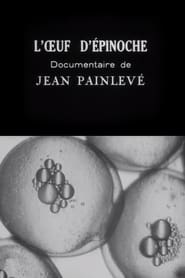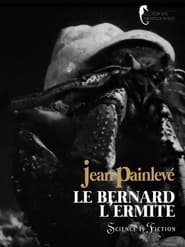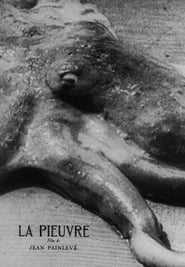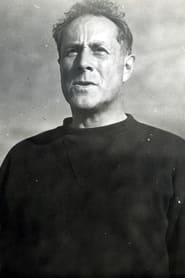
Jean Painlevé
Jean Painlevé was a French photographer and filmmaker who specialized in underwater fauna.
Freshwater Assassins
(1947)

In a freshwater pond, it's "eat or be eaten." A dragonfly larva eats a midge; a water beetle larva eats a damselfly larva. Snail larvae grow. A beetle larva eats one. Up close, we see the eating apparatus of a damselfly larva—with a retractable hook beneath ... (more)
In a freshwater pond, it's "eat or be eaten." A dragonfly larva eats a midge; a water beetle larva eats a damselfly larva. Snail larvae grow. A beetle larva eats one. Up close, we see the eating apparatus of a damselfly larva—with a retractable hook beneath ... (more)
Calder's 1927 Great Circus (1955)
Alexander Calder created and performed one of the most important and beloved works, his miniature circus (1926-1931). More than twenty years later Jean Painleve made Le Grande Cirque Calder 1927, begun in 1953 and completed in 1955. (more)
Alexander Calder created and performed one of the most important and beloved works, his miniature circus (1926-1931). More than twenty years later Jean Painleve made Le Grande Cirque Calder 1927, begun in 1953 and completed in 1955. (more)
Sea Ballerinas
(1956)

Two kinds of starfish, the brittle and the feather. The brittle star moves its arms alone, without the aid of suckers. Underneath is a single opening. Stalks move food close to the mouth and move waste away. We see vents, used in reproduction and breathing. We ... (more)
Two kinds of starfish, the brittle and the feather. The brittle star moves its arms alone, without the aid of suckers. Underneath is a single opening. Stalks move food close to the mouth and move waste away. We see vents, used in reproduction and breathing. We ... (more)
Diatoms
(1968)

The one-celled long and slender diatom, up close: discovered in 1703 with the invention of the microscope. We observe them magnified 10,000 times: water expelled through the skeleton, mucilage constantly emitted, allowing it to glide. Their energy comes from ... (more)
The one-celled long and slender diatom, up close: discovered in 1703 with the invention of the microscope. We observe them magnified 10,000 times: water expelled through the skeleton, mucilage constantly emitted, allowing it to glide. Their energy comes from ... (more)
Crabs and Shrimp (1930)
Jean Painlevé is interested here, with the help of Eli Lotar, in crabs and shrimps. He is particularly interested in detailing their anatomy and observing their mating and fighting behavior. (more)
Jean Painlevé is interested here, with the help of Eli Lotar, in crabs and shrimps. He is particularly interested in detailing their anatomy and observing their mating and fighting behavior. (more)
Sea Urchins
(1929)

A close-up look at sand urchins and rock urchins. At the seashore, a man digs up a sand urchin. We look closely. He sets it back in the sand, and it burrows out of sight. Its intestines take nutrients out of sand. Using magnification 200,000 times normal size, we ... (more)
A close-up look at sand urchins and rock urchins. At the seashore, a man digs up a sand urchin. We look closely. He sets it back in the sand, and it burrows out of sight. Its intestines take nutrients out of sand. Using magnification 200,000 times normal size, we ... (more)
Daphnia
(1928)

Titles in French and English help us know what we're seeing. In all waters, daphnia abound. They are crustaceans about 2 ml long, with one eye that turns in all directions. Antennae enable daphnia to move: in a close up magnified 150,000 times, we see the muscles ... (more)
Titles in French and English help us know what we're seeing. In all waters, daphnia abound. They are crustaceans about 2 ml long, with one eye that turns in all directions. Antennae enable daphnia to move: in a close up magnified 150,000 times, we see the muscles ... (more)
The Stickleback's Eggs
(1925)

An educational film, a movie through a microscope, in two parts. Within minutes after the egg drops in the water, fertilization occurs and contractions start. Soon, in a fertilized egg, we see the germinal disc divide into two blastomeres. Divisions continue; ... (more)
An educational film, a movie through a microscope, in two parts. Within minutes after the egg drops in the water, fertilization occurs and contractions start. Soon, in a fertilized egg, we see the germinal disc divide into two blastomeres. Divisions continue; ... (more)
Hermit crab (1930)
Painlevé’s first film on animal behavior, focusing on the Hermit Crab. On this film we see the Hermit Crab trying to find shelter. (more)
Painlevé’s first film on animal behavior, focusing on the Hermit Crab. On this film we see the Hermit Crab trying to find shelter. (more)
The Octopus
(1927)

An octopus slithers over objects on land—a doll, a skull—then oozes along the shore into the sea. It secretes its ink. The camera follows it along rocks into deeper water, watching closely as it breathes. Its eye is closed then open. Simple titles, in French and ... (more)
An octopus slithers over objects on land—a doll, a skull—then oozes along the shore into the sea. It secretes its ink. The camera follows it along rocks into deeper water, watching closely as it breathes. Its eye is closed then open. Simple titles, in French and ... (more)
Mathusalem (1927)
Mathusalem (or Methuselah) is a 1922 play by Ivan Goll, considered a precursor of the theater of the absurd. The 1927 run of the play saw five sequences-- some of Jean Painlevé's earliest film work-- projected against a backdrop of white clouds. (more)
Mathusalem (or Methuselah) is a 1922 play by Ivan Goll, considered a precursor of the theater of the absurd. The 1927 run of the play saw five sequences-- some of Jean Painlevé's earliest film work-- projected against a backdrop of white clouds. (more)
